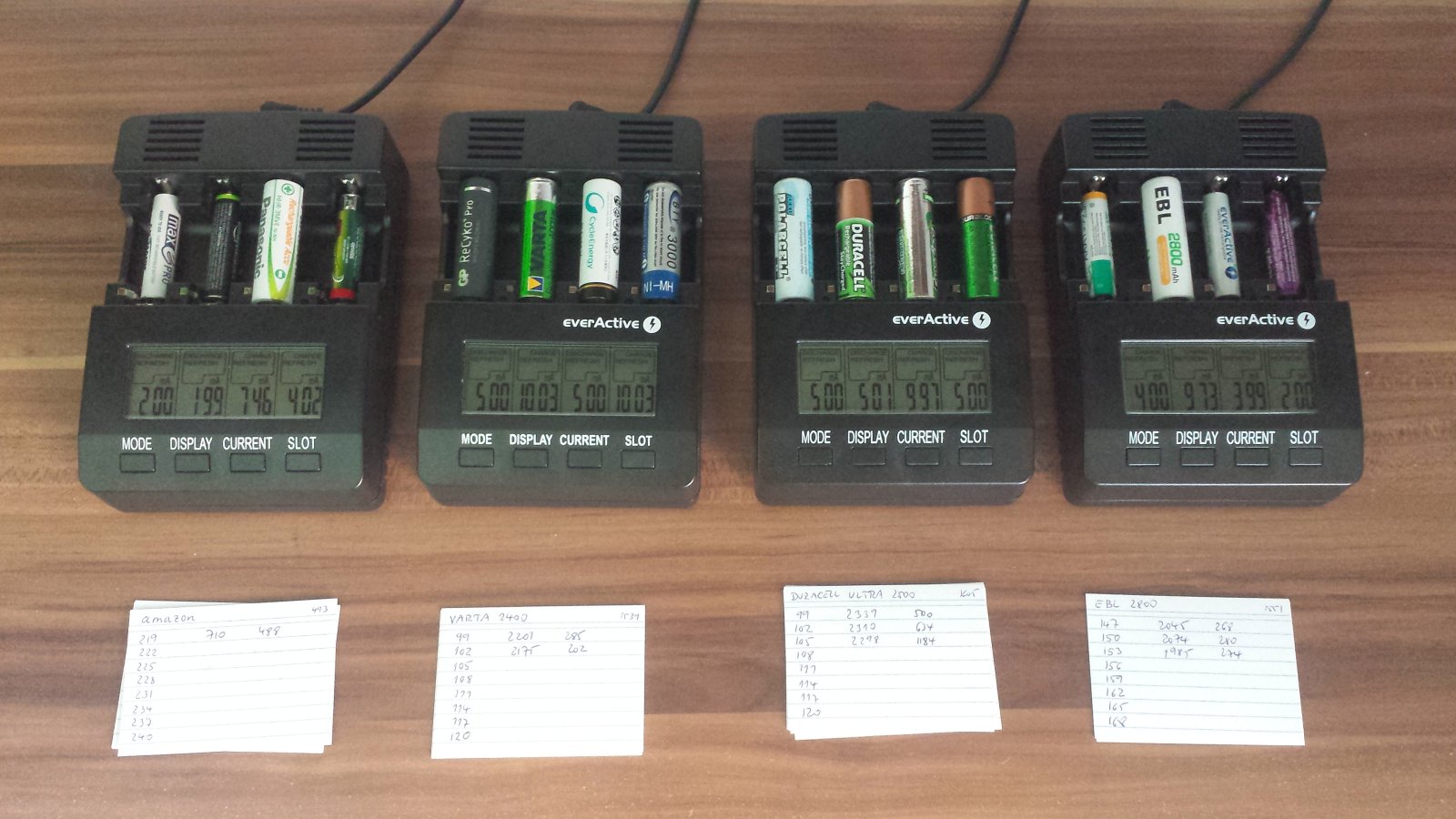Cycle Life Testing
Starting 2018 I changed my test setup. I switched from SkyRC MC3000 to OPUS BT-C2000 (or everActive NC-3000 clone).

The new cycling currents are
| Cell Size | Charge | Discharge |
|---|---|---|
| AA | 1000 mA | 500 mA |
| AAA | 400 mA | 200 mA |
With OPUS BT-C2000 I can not control the charge and discharge algorithms anymore, all I can set is the current. It seems to use -dV for charge termination and discharges to 0.9V open circuit. I wish it was 0.9V under load.
I use the Refresh function to run 3 discharge-charge cycles. When the refresh finishes I write down the capacity, measure the internal impedance with EM3610, and start another refresh cycle.
From the first 8 values (24 cycles) I calculate the initial capacity and I keep cycling the cell until it falls below 80% of its initial value.
At the end I calculate the cell’s average capacity and the total Amp-hours delivered throughout its lifespan (score).
Reasons for change
- I disliked active cooling and the need of cleaning the fans every 3 months. I am willing to sacrifice speed for maintenance free operation
- I prefer dedicated AA/AAA slots over sliding contacts
Switching to OPUS BT-C2000 also means I am not able to measure energy (mWh) anymore. I wish OPUS added this feature with a new firmware release.
Old Test Setup (until 2018)

The cycling current is 1500mA for AA and 500mA for AAA cells. Charge and discharge currents are always identical.
Charging uses 0dV termination, discharge cuts off at 0.9 V (measured under load).
Internal impedance is measured once every 10 cycles in charged state using internal resistance meters.
From the first 40 values the cell’s initial capacity is calculated. Then the cell is cycled until its capacity falls below 80%.
At this point the average capacity is calculated from values measured throughout the cell’s lifetime.
Also the score points are calculated (Score = Cycles * Capacity / 1000) which represent the total Amp-hours delivered by the cell throughout its lifespan.
For graphing purposes the cell is cycled yet another 80%, e.g. until 64% of its initial capacity.